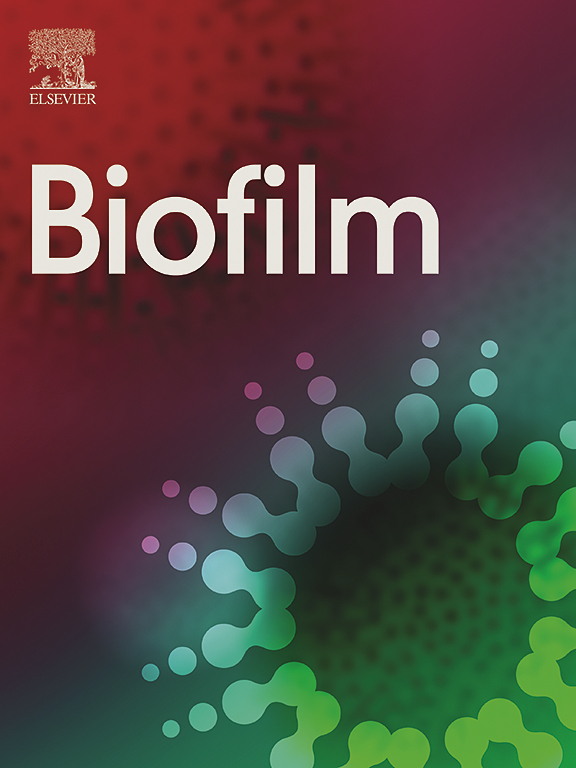Antimicrobial efficacy of on-label vs. hand-mixed irrigation solutions against S. aureus biofilms
IF 4.9
Q1 MICROBIOLOGY
引用次数: 0
Abstract
Wound irrigation is routinely performed as part of the DAIR procedure and for hardware infections, yet the most effective irrigation solution for reducing bacterial bioburden is unknown. Clinicians can choose on-label, commercially available irrigation solutions or hand-mix preparations off-label on the operating back table. Current methods for evaluating antiseptic efficacy often do not represent the clinical scenario. Here, we present a proof-of-concept ex vivo setup to evaluate whether on-label, commercially available irrigation solutions were superior at reducing bacterial biofilm burden compared to off-label, hand-mixed irrigation solutions. Staphylococcus aureus ATCC 49525 (Xen36) biofilms were grown on Grade 5 titanium simulated fracture fixation plates and secured to sections of autoclaved bovine femur with cortical bone screws. Fourteen irrigation solutions (three commercial, eleven hand-mixed) and one untreated control group were evaluated by irrigating the biofilm-ridden plates and quantifying the remaining bioburden using a 10-fold dilution series to determine the log10 reduction. None of the fourteen treatments reduced bioburden statistically significantly compared to the untreated control, where no irrigation was performed. Additionally, no treatment achieved the FDA benchmark of a 4 log10 reduction for antibacterial activity. An off-label, hand-mixed 0.472 % w/v chlorhexidine gluconate solution reduced the greatest bioburden overall, with a 1.43 ± 0.20 log10 reduction. On-label irrigation products did not reduce bioburden more than off-label, hand-mixed solutions clinicians often prepare in the operating room. Musculoskeletal infections remain a significant clinical challenge and contribute to increasing healthcare costs. The antimicrobial efficacy of irrigation products should be assessed using clinically relevant models.
标签上与手工混合的灌溉溶液对金黄色葡萄球菌生物膜的抗菌效果
伤口冲洗是DAIR程序和硬件感染的常规操作的一部分,但减少细菌生物负荷的最有效冲洗解决方案尚不清楚。临床医生可以选择标签上的,市售的灌溉解决方案或手混合制剂标签外的操作工作台。目前评估抗菌药物疗效的方法往往不能代表临床情况。在这里,我们提出了一个概念验证的离体设置,以评估是否在标签上,市售的灌溉溶液在减少细菌生物膜负担方面优于非标签,手工混合灌溉溶液。在5级钛模拟骨折固定板上培养金黄色葡萄球菌ATCC 49525 (Xen36)生物膜,并用皮质骨螺钉将其固定在高压灭菌的牛股骨切片上。对14种灌溉溶液(3种商用,11种手工混合)和1种未经处理的对照组进行评估,方法是对生物膜覆盖的平板进行灌溉,并使用10倍稀释系列来量化剩余的生物负荷,以确定log10的减少量。与未进行灌溉的对照组相比,14个处理中没有一个能显著减少生物负荷。此外,没有一种治疗方法达到FDA的抗菌活性降低4 log10的基准。标签外,手工混合的0.472 w/v葡萄糖酸氯己定溶液总体上减少了最大的生物负荷,减少了1.43±0.20 log10。标签上的冲洗产品并不比标签外的、临床医生经常在手术室准备的手工混合溶液更能减少生物负担。肌肉骨骼感染仍然是一个重大的临床挑战,并有助于增加医疗保健费用。冲洗产品的抗菌效果应采用临床相关模型进行评估。
本文章由计算机程序翻译,如有差异,请以英文原文为准。
求助全文
约1分钟内获得全文
求助全文

 求助内容:
求助内容: 应助结果提醒方式:
应助结果提醒方式:


